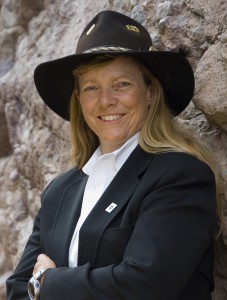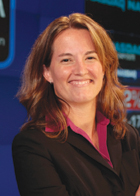by HEC Team | Apr 3, 2014 | 2014, News
Last week’s successful Electric Utilities of the Future Conference sparked a dialogue centered around the emergence of new utility models in Hawaii. Think Tech Hawaii’s Jay Fidel recently led a robust discussion recapping the Conference. Joining Jay in the conversation were Warren Bollmeier, President of the Hawaii Renewable Energy Alliance; Henry Curtis of Ililani Media; Ray Starling, Director of the Hawaii Energy Program at Leidos; and Doug McLeod, Maui County Energy Commissioner.
by HEC Team | Mar 31, 2014 | 2014, News
Originally published on Ililani Media
A Hawaii Energy Conference like no other Hawaii Energy Conference took place over the past two days on Maui.
The power brokers of the incumbent electric utility were there in force.
Hawaiian Electric Industries (HEI) owns Hawaiian Electric Company (HECO) which owns Maui Electric Company (MECO).
The head of all three were in attendance: HEI CEO Connie Lau, HECO President Richard Rosenblum and MECO President Sharon Suzuki.
The leadership of the Public Utilities Commission attended. This included all three PUC Commissioners, the Chief Policy Researcher and the Chief Counsel.
Key representatives from the Counties of Kauai, Maui and Hawai’i attended. These three Hawaii Counties are actively engaged in Energy Policy (Honolulu has seldom taken the issue seriously).
And more than attend, these three groups — the utilities, the regulators and the counties –addressed the audience and engaged in dialogue.
About 245 people attended the conference sponsored by the Maui County and the Maui Economic Development Board.
Attendees consisted of 75 women and 170 men. The breakout by region was 73 people from Maui, 104 from other areas of the State, 54 from the rest of the country, 3 from Canada and 11 from Japan; 53 from the public sector, 168 from the private sector and 24 from the non-profit sector. Most of those from the non-profit sector were representatives from energy trade groups and consultants.
The Event was held at the Maui Arts & Cultural Center. The facility is open, airy and has expansive views of the mountains. The site is next to Maui Community College and adjacent to a large solar generation facility.
Read the full article on Ililani Media
by HEC Team | Mar 23, 2014 | 2014, News
 In L. Hunter Lovins’ vision of the not-too-distant future, power generation and distribution will be radically different from what we are accustomed to today.
In L. Hunter Lovins’ vision of the not-too-distant future, power generation and distribution will be radically different from what we are accustomed to today.
Lovins says the era of distributed generation is here and that central station power has no future. “An energy-rich island like Maui can become a global leader in the energy future by implementing energy efficiency, solar energy, wind, biofuels and appropriately sited geothermal,” she said.
“The utility industry of the past has very successfully extracted community wealth and shipped it abroad to buy oil, coal and other imports,” Lovins continues. “The utility of the future will be managed to generate wealth for the people of the islands. Best case, it would likely be community owned, as the utility on Eigg, in Scotland, is, but at a minimum it will be managed to keep Maui’s wealth on Maui, generating energy from local sources and paying its executives a fair local wage.
Lovins, president of the Colorado-based Natural Capitalism Solutions, is among the forward-looking speakers scheduled to address energy policy leaders at the March 26-28 conference, “Electric Utilities: The Future Is Not What It Used To Be,” at the Maui Arts & Cultural Center in Kahului.
Her nonprofit educates senior decision-makers in making the business case for a “Regenerative Economy,” and helps companies, communities and countries profit from implementing more sustainable business practices. Working in energy policy since 1972, Lovins is an international consultant, professor, speaker and author on ways to use resources more efficiently.
She cites the German utility RWE as a model of what the future holds. She said RWE has become a distributor of “diverse, distributed renewable power, meeting customer needs first through efficiency and then through aggregating a mix of renewable power generated by others. They will enable customers to gain the energy services that they want: cold beer and hot showers, not electricity produced by their power stations.”
One of the biggest paradigm shifts would affect traditional utilities, she said. “The utility industry has for too long hidden behind its regulated monopoly status, protecting its preferred answers: central power station and incumbent power structures.”
Maui is well positioned for the coming energy future, she said.
“Every region has its own best mix of renewable energy, unique customer needs,” she said. “Maui is blessed with a rich energy mix of sun, wind, growing things and volcanic energy. Where I teach in Seattle, we have a different mix. But everywhere so far studied around the inhabited world, there is ample renewable energy, if used cost-effectively (and) efficiently to meeting growing demands with efficiency and renewables. This is the only energy mix that makes sense in a world in a climate crisis, is the only affordable future, and is the future that Maui should grab with both hands, as has the island of Eigg in Scotland, or Samso in Denmark.”
by HEC Team | Mar 23, 2014 | 2014, News

Julia Hamm
While traditional electric utilities might see the rapid development of solar power alternatives as a problem to confront, Solar Electric Power Association President and Chief Executive Officer Julia Hamm sees a collaborative, win-win future for both to thrive.
“Some observers believe that the logical reaction of utilities to solar is to see it as a threat that will demand amassing their considerable power to stop,” she said. But “we at the Solar Electric Power Association see the future playing out differently. There might be some utilities digging in their heels, but we see a growing number who recognize that accommodating more distributed, customer-based generation presents new business opportunities,” Hamm said.
“Solar is the bellwether of a more customer-focused energy business in which electric utilities can be a significant and successful player,” she said.
Hamm is among the keynote speakers confirmed for the March 26-28 conference, “Electric Utilities: The Future Is Not What It Used To Be,” at the Maui Arts & Cultural Center in Kahului. Other speakers include Binz, former chief of the Colorado Public Utilities Commission; and Constance Lau, president and chief executive officer of Hawaiian Electric Industries. March 28 will include optional field tours.
The conference is a much-anticipated opportunity for policy and business leaders to explore the electric power generation transition from fossil fuels to renewable energy.
Hamm, who holds a bachelor of science degree in business management and marketing from Cornell University, said the utility industry is in a time of transition, “and utilities are actively questioning long-held assumptions and seeking answers.” It’s not an easy time for those in the traditional power generation industry, she said.
“Utilities are accustomed to resources they can count on and generation that they can manage around the clock,” she said. “At the same time, they are beginning to look to solar to help meet the peak demand and cut back on expensive peak generation. Right now questions may outnumber answers about how this transition will play out. I hope this conference will help further explore these questions and push towards some win-win solutions.”
In Hawaii, solar photovoltaic installations totaled 17,609 with more than 129 megawatts of capacity added to Hawaiian Electric, Maui Electric and Hawaii Electric Light Co. grids in 2013, according to HECO. That was 39 percent more than was added in 2012, the utility said.
Maui alone has 5,000 photovoltaic systems on an island of 150,000 people.
“The explosive growth of solar over the past few years caught many in the electric utility industry by surprise,” Hamm said. “The sheer amount of solar is impressive, though the 10-plus gigawatts of solar installed in the U.S. today is still less than 1 percent of U.S. electricity production. What’s grabbing the attention of utilities is the potentially cascading impact of solar in decentralizing the generation of electric power delivered to the customer.”
Hamm said collaboration is the key to future success. “There are bumps in every road, and many would say that the growing influx of distributed solar is leading the electric utility sector into a particularly bumpy stretch, particularly in places like Hawaii where solar is cost competitive today to retail electricity rates,” she said.
“But collaboration between utilities, regulators, solar providers and customers will lead to the development of new regulatory compacts, rate structures, business models and partnerships that benefit all. Solar success will mean that the electric utility industry is more technologically dynamic and more customer responsive than at any time in history.”
by HEC Team | Mar 3, 2014 | 2014, News
Originally published on Ililani Media
Hawaiian Electric Industries President and CEO Constance Lau and Hawaii Public Utilities Commission Chair Hermina Morita will be keynote speakers at a Maui Energy Conference scheduled for the end of March.
Conference co-sponsors include HECO, MECO, HELCO, First Wind, DBEDT, Maui County and the Maui Economic Development Board.
The focus of the conference will be on developing a Roadmap or Blueprint for transitioning the HECO Companies into the future.
Read the full article on Ililani Media
by HEC Team | Feb 20, 2014 | News
Originally published on Ililani Media
Most energy stakeholders believe that we are in the beginning stage of an energy revolution that will transform how energy is produced, delivered and consumed.
The initial focus was on the nature of the future utility grid.
Will the grid be modernized to handle two-way flowing electricity?
Should we build a Smart Grid that has control systems and communication nodes embedded throughout the transmission and distribution system?
Will there be a proliferation of micro-grids interconnected by a transmission spine?
Will there be greater emphasis on distributed generation?
The next issue being tackled is what will the future business model look like? How will utility companies transition themselves to survive in the new era?
Read the full article on Ililani Media

 In L. Hunter Lovins’ vision of the not-too-distant future, power generation and distribution will be radically different from what we are accustomed to today.
In L. Hunter Lovins’ vision of the not-too-distant future, power generation and distribution will be radically different from what we are accustomed to today.